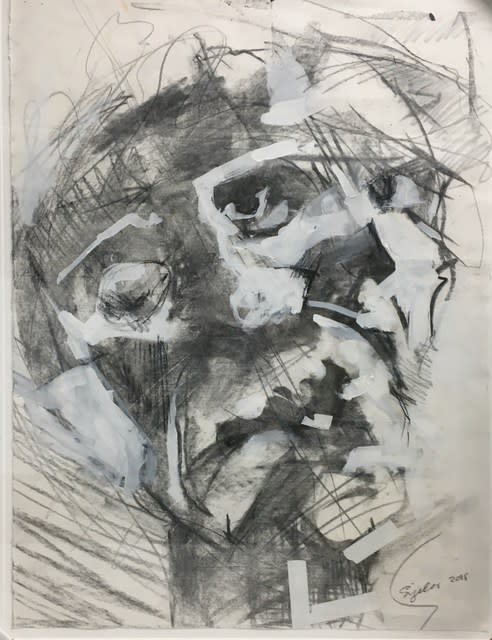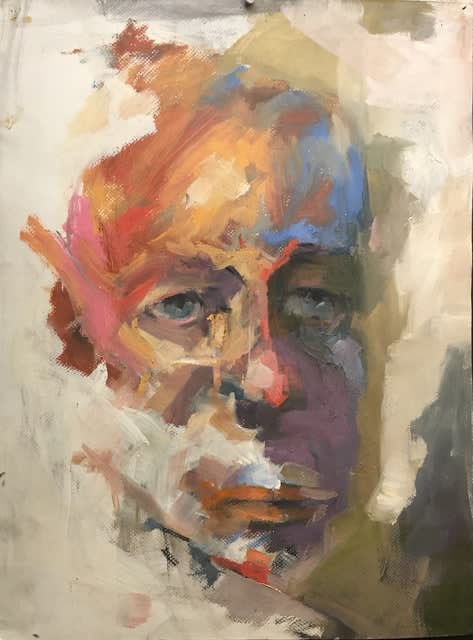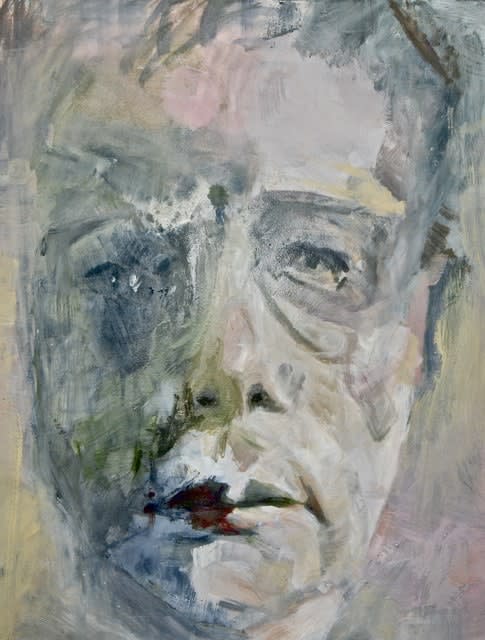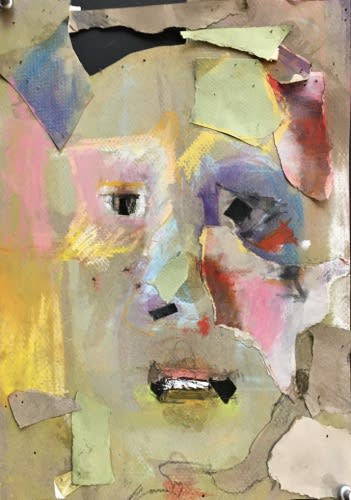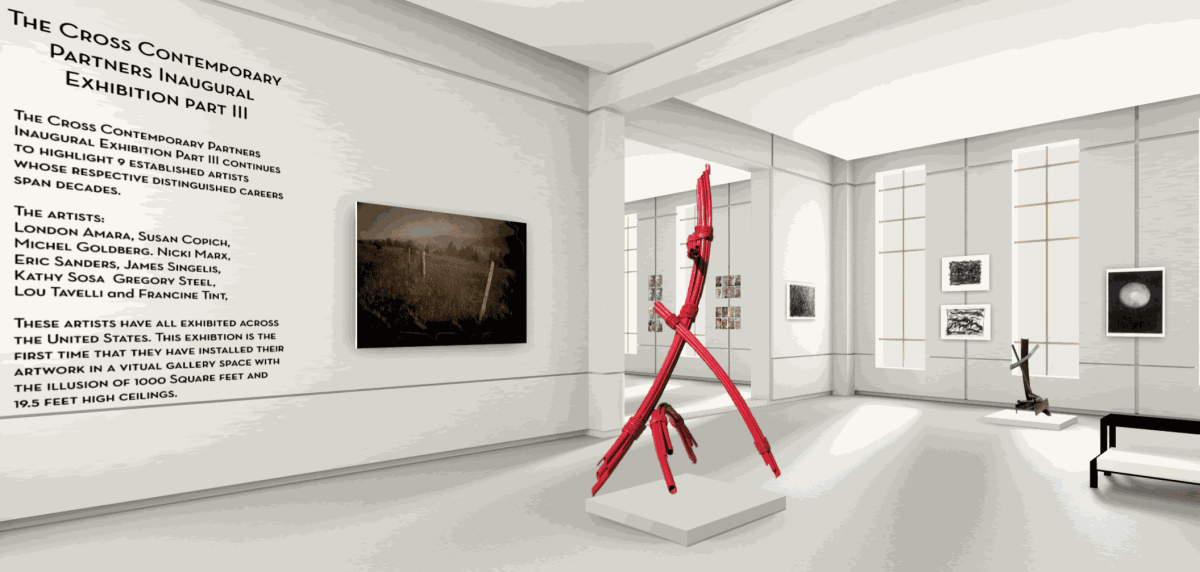James Singelis
His subjects have that all-important inner glow that illuminates the forms and defines the emotions.
Egon Schiele once said “Bodies have their own light which they consume to live: they burn, they are not lit from the outside”. Many of the portraits created by Jim Singelis have that same luminous quality. His subjects have that all-important inner glow that illuminates the forms and defines the emotions. Even when he works with black and white, a stirring image comes in from the light or out of the darkness as features form and faces materialize the same way that distant beams of passing car lights cut the night as they pass through an uncovered window. In other instances, when his subjects have a more outer or ambient light reference they may appear ghostly, like an apparition or vision of something from the distant past or far-flung future. Other times, his subjects will blend right into the background revealing a meekness or profound vulnerability in an all out assault of abstracted space and time.
- D. Dominick Lombardi
The theatre, especially the backstage elements of designing, lighting and rigging scenery had been a major of interest since childhood; one of his earliest inventions was a puppet theater.
Jim Singelis was born in Warren, Ohio and grew up in Connecticut, Maryland, and Illinois, where he attended Lake Forest Academy as a boarding student. He was awarded a Bachelor of Arts from Indiana University in 1967 with a double major in Italian and Art History; he then pursued art history studies for another year at Universita di Bologna, where he found the experience of being immersed in Italian art and architecture as important to his later development as the academic studies themselves.
The theatre, especially the backstage elements of designing, lighting and rigging scenery had been a major of interest since childhood; one of his earliest inventions was a puppet theater. Upon returning from Italy he enrolled at the University of Arizona and earned a Master of Arts in Technical Theatre and Set Design in 1969.
For the next two decades he designed scenery for theatre, movies and print advertising and taught scenic design for 10 years at the noted Lester Polakov Studio and Forum of Stage Design. Film credits include art direction for Once Upon a Time in America with Robert De Niro and See No Evil, Hear No Evil with Richard Pryor and Gene Hackman.
Then he acquired his first computer and quickly became enthralled. He enrolled in the Computer Technology Applications program at Columbia University, which he completed it in 1991.The skills he learned made it possible to work from home, and this in turn enabled him to leave New York City for the serenity of Berkshire County, Massachusetts.
While he was consulting with programming clients near his home and around the country, his interest in art was reignited by open studio life drawing classes at IS183, the Art School of the Berkshires. Eventually art-making supplanted computers, and in 2009 he began painting full time.
Jim Singelis has shown previously in solo and group exhibitions, including The Other Art Fair in Brooklyn; in Massachusetts, he has exhibited at Knox Gallery in Monterey, St. Francis Gallery, Lee, the New Marlborough Arts Center, the Sandisfield Arts Center, Joyce Goldstein Gallery and the Mary G. Hardin Cultural Center.
-

Small Standing Tall
Small Works by Big Artists 8 May - 5 Jun 2021KTC Affiliated Artists is pleased to present Small Standing Tall , an exhibition of small paintings, prints, photographs and sculpture by 12 mid-career artists. The exhibition is hosted by the Joyce Goldstein Gallery at 19 Central Square, Chatham, NY with hours Thursday - Sunday 1:00-4:00pm. The exhibition opens on Sat....Read more -

KTC Affiliated Artists Inaugural Exhibition Part III
26 Mar - 31 Dec 2021KTC Affiliated Artists launches a third group exhibition of artists in a virtual art exhibition space dedicated to digital representation of artwork on the internet. The Cross Contemporary Partners Inaugural Exhibition Part III presents ten established artists whose distinguished careers span decades. The artists: London Amara , Susan Copich ,...Read more
Jim Singelis describes his images as self-portraits without a mirror, and the complex emotions they represent do embody a singular and personal intensity. The series actually began with one clear and literal self-likeness, and he starts each new painting or drawing by sketching his own reflection. But from there he improvises, and while he observes and reacts the image takes on its own personality, going through many changes, sometimes alternating between male and female or even becoming another species before reaching its final form. Marks documenting the process remain visible; the multilayered, extensively worked surface creates both background and context. The portraits represent not only himself, but also individual characters who have an inner life and relationships of their own in a world whose population continues to expand. He also intends them as self-portraits of a kind for those who look at them, mirrors of emotional states and conditions they know and relate to through the lens of their own experience. Titles are purposely left vague, allowing observers to contribute the narrative or interpret the content for themselves.


